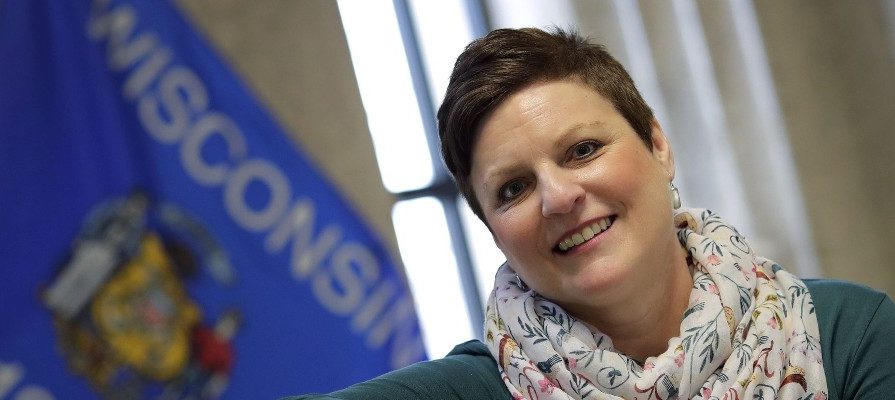Sometimes in life, hoping that everything will be fine is just not enough.
Just ask Gail Zeamer, who was notably proactive and meticulous about scheduling her annual mammograms. Little did she know, that for three years in a row, a dangerous tumor was hidden and growing in her left breast. It was undetected by her annual mammograms.
After all, doesn’t a normal mammogram report indicate that all is well?
Not always. Numerous studies show mammography may fail to detect cancers in dense breasts. The key is for women to know if they have dense breasts, and if they do, they need to have a discussion with their physician to determine if further testing would be beneficial.
Breast-Care Diligence Not Enough
A wife and mother of two daughters, Gail, of Neenah, Wisconsin, thought her breast health was normal, even though she’d felt an odd lump on her left breast, near the nipple. She had mentioned it at prior screening appointments to no avail. She was told it was probably a harmless cyst related to bodily changes that are a part of aging. At a later screening, she dutifully reported the lump as a “change in her breasts.” Gail even went further and asked for an ultrasound as an additional screening, but again was advised not to worry.
During her 2016 mammogram—the third since she’d felt the mysterious lump—the images showed abnormal lymph nodes under her arm. A 3D ultrasound confirmed a 3.9-centimeter tumor in a lymph node and Stage 3C cancer which had metastasized to those nodes.
It was shocking news but Gail, then 47, thought that maybe it wasn’t such a surprise after all.
The speech-language pathologist later learned that previous notes in her medical chart indicated she had dense breasts. That meant her breasts were comprised of relatively high amounts of glandular and fibrous connective tissue. Dense tissue appears “white” on mammograms, and so does cancer, creating a camouflage effect, that makes cancer more difficult to identify on a mammogram. A secondary, essential screening like ultrasound or MRI is needed to see obscured cancers in dense breasts.
According to Dense Breast-info, about 40 percent of women of mammography age have dense breasts.
While enduring aggressive treatment, Gail spent time learning about breast cancer and breast density. She thought about how careful she had been and how factors beyond her control impacted her life. Then she thought about how she could use her own experience to help other women with dense tissue to better manage their own breast health.
Fighting for Women to Know their Breast Density
Gail founded the Wisconsin Breast Density Initiative to educate and empower Wisconsin women about breast density. Gail knew from personal experience that many women were not being informed about breast density or being offered supplemental screening.
A supplemental test after a mammogram is essential for women with dense breasts. One technology that has been developed specifically to image dense breast tissue is Invenia ABUS 2.0 (Automated Breast Ultrasound). It is the only FDA-approved ultrasound screening tool for dense breasts and can improve breast cancer detection by 37.5 percent over mammography alone1. The exam takes approximately 15 minutes and does not involve any radiation.
Advocacy Leads to Change
Even while Gail was enduring treatment and feeling extremely tired, she was encouraged by her family to move forward in her quest. She then met with Wisconsin Rep. Mike Rohrkaste to enthusiastically encourage him to draft the Breast Cancer Notification bill for Wisconsin. It ensured that women would not only know about dense breast tissue, but they would be informed if they, themselves have it. The bill’s goal was earlier detection, prevention, and awareness, the legislator told local media.
Thanks to their combined efforts, the bill became law in April 2018. It was a shining example of turning a personal experience into something that may save many other lives.
But Gail has not stopped. She also wants the essential secondary screening to be fully covered by insurance. Usually these exams involve a high copay and deductible which make them out of reach for many women.
“Providing women with education and notification about breast density has offered immeasurable hope for early diagnosis of breast cancer,” she says. “However, many women are denied the essential screenings needed because they are cost prohibitive when paid out-of-pocket. My focus now is to ensure equal coverage for women with dense breast tissue, as mammography alone is not a complete screening for us.”
Today, GE Healthcare is supporting advocates like Gail to make this type of legislation commonplace across the country. To learn more about these efforts and to get involved, click here.
1. Accessed on 9/23/2020: https://www.postcrescent.com/story/news/2018/04/03/gov-scott-walker-signs-breast-density-bill-after-neenah-womans-push-legislation/482761002/




Leave a Reply